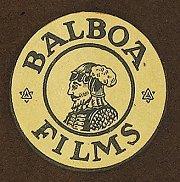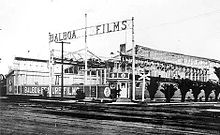
Ruth Roland was an American stage and film actress and film producer.

Hobart Van Zandt Bosworth was an American film actor, director, writer, and producer. Bosworth began his career in theater, eventually transitioning to the emerging film industry. Despite a battle with tuberculosis, he found success in silent films, establishing himself as a lead actor and pioneering the industry in California. Bosworth started his own production company, Hobart Bosworth Productions, in 1913, focusing on Jack London melodramas. After the company closed, Bosworth continued to act in supporting roles, surviving the transition to sound films. He is known as the "Dean of Hollywood" for his role in shaping the California film industry. In 1960, Bosworth was awarded a star on the Hollywood Walk of Fame for his contributions to the film industry.

Marie Osborne Yeats, credited as Baby Marie between 1914 and 1919, was an American actress who was the first major child star of American silent films. She was one of the three major American child stars of the Hollywood silent film era along with Jackie Coogan and Diana Serra Cary. As an adult, from 1934 until 1950, and now billed as Marie Osborne, she continued in film productions, although she appeared only in uncredited roles. In the 1950s, after retiring from the acting profession, she carved out a second career as a costume designer for Hollywood film.

Clara Beyers was an American silent film stock actress.

Mollie McConnell was an American silent film actress.
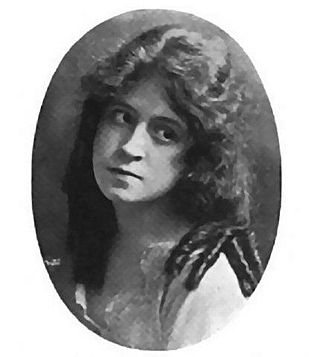
Gypsy Abbott was an American actress of stage and silent film.

Lule Warrenton was an American actress, director, and producer during the silent film era. She appeared in more than 80 films between 1913 and 1922. She was born in Flint, Michigan and died in Laguna Beach, California and was the mother of cinematographer Gilbert Warrenton.

Jackie Saunders was an American silent screen actress who was one of the major players and stars of Balboa Films.
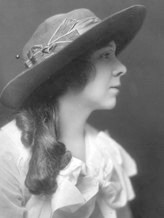
Nell W. Franzen was an American film and stage actress of the silent era. A native of Portland, Oregon, Franzen began her career acting in local theatre. She signed with the Baker Theatre Company and performed in various stage productions, becoming a prolific stage actress in the Pacific Northwest.
Frank Erlanger, also credited as Frank A. Erlanger or Frank Charles Erlanger was a Hungarian-American silent film actor best known for his work with the Balboa Amusement Producing Company.
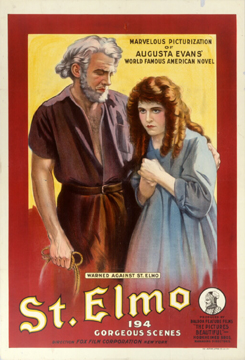
St. Elmo is a 1914 American silent drama film produced by the Balboa Amusement Producing Company and distributed by William Fox's Box Office Attractions Company. It was the first feature-length film adaptation of Augusta Jane Evans's 1866 novel of the same name. The story follows the life of the title character, who kills his cousin over the love of Agnes, falls from grace, and eventually finds redemption and love with Edna. It is disputed who directed the film; many sources credit Bertram Bracken, while others list St. Elmo as J. Gordon Edwards's directorial debut.
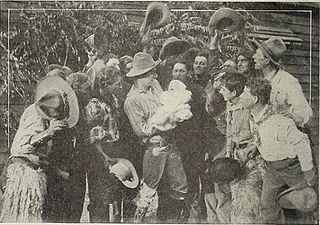
Life's Shop Window is a 1914 American silent drama film directed by J. Gordon Edwards and starring Claire Whitney and Stuart Holmes. It is a film adaptation of the 1907 novel of the same name by Annie Sophie Cory. The film depicts the story of English orphan Lydia Wilton (Whitney), and her husband Bernard Chetwin (Holmes). Although Wilton's marriage is legitimate, it was conducted in secret, and she is accused of having a child out of wedlock. Forced to leave England, she reunites with her husband in Arizona. There, she is tempted by infidelity with an old acquaintance, Eustace Pelham, before seeing the error of her ways and returning to her family.

The Sea Wolf is a lost 1913 American silent adventure film directed by and starring Hobart Bosworth and co-starring Herbert Rawlinson. Based on the 1904 Jack London novel The Sea-Wolf, the production's master negatives were destroyed in the disastrous 1914 vault fire at the Lubin Manufacturing Company, the Philadelphia-based film company that Bosworth contracted to produce theatrical prints of his screen adaptation.
Spellbound or The One-Eyed God, is a 1916 American crime drama silent black and white film directed by Harry Harvey and produced by E.D. Horkheimer and H.M. Horkheimer. It is written by Bess Meredyth.
William H. Clune was an American railroad property developer, film exchange and then theater chain owner, film studio owner, and film producer.
Pallas Pictures was a film studio in the U.S. headed by Frank A. Garbutt. In 1913 the film production company Bosworth Incorporated was founded to release film adaptations of Jack London's stories. Hobart Bosworth was President of the company but as Jack London wrote, "Mr. Garbutt has absolute charge of the entire business of Bosworth, Inc." The company rented studio space until September 1914 when Bosworth Inc. constructed its own studio at 211 N. Occidental Blvd., Los Angeles. When Hobart Bosworth left in 1915 Garbutt assumed full control of Bosworth Inc. Several months later the company was renamed Pallas Pictures, with Melodile Garbutt listed as president of Pallas Pictures. The Pallas logo was a capital "P" with an owl on a branch.

Louis Anger was an American vaudeville performer and movie studio executive. During the early days of the American silent film industry, Anger was considered to be "the king of slapstick comedy producers," and was instrumental in developing the film careers of famed actors Fatty Arbuckle and Buster Keaton.
The Stolen Play is a 1917 silent film directed by Harry Harvey from a script by the Horkheimer brothers for their Balboa Amusement Producing Company.
Frederick J. Whitman was an American actor during the silent film era.
Pilot Films Corporation, also known as Pilot Films Company, was a short lived American independent film production company founded in 1913. The company was located at 120 School St. in Yonkers, New York. A maker of silent films, the first film it released was The Blacksmith's Story (1913), directed by Travers Vale. Producing more than thirty films in the year 1913, it made several films starring the actress Lottie Pickford. In addition to making films at its studio in Yonkers, it also leased Balboa Films to create films in California; including the 1913 film Hoodman Blind directed by James Gordon.
